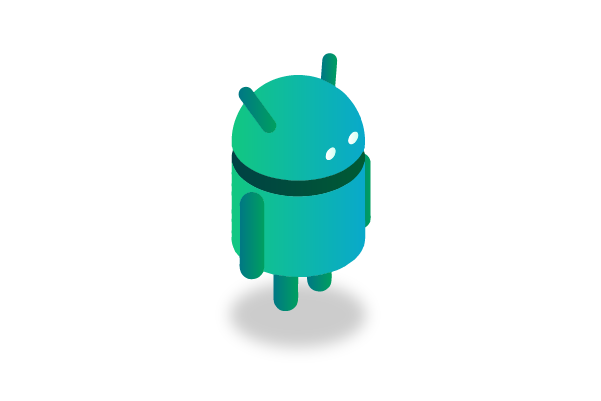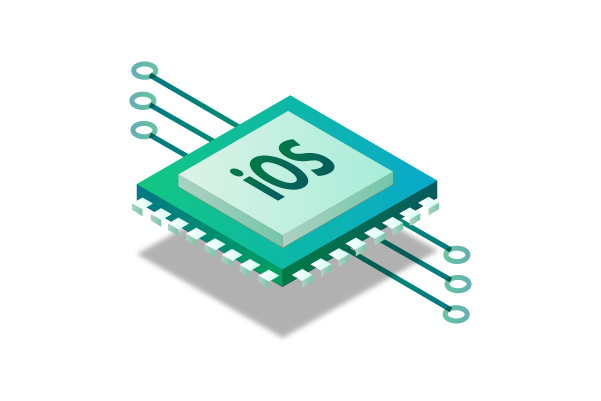Mobile app development has long been dominated by Android, earning the affection of both developers and users. However, 2023 ushers in an exciting shift with the introduction of Stack Mobile. This groundbreaking platform is set to transform our mobile experiences by leveraging Android’s extensive ecosystem while spearheading the Web3 revolution. This innovative approach promises enhanced security, decentralization, and accessibility for users.
Before we delve into the remarkable Stack Mobile, it’s essential to acquaint ourselves with the core elements of mobile app development. Emerging as a true game-changer within this context, Stack Mobile effectively bridges the ever-growing divide between the immense popularity of Android and the rapidly evolving Web3 landscape. By prioritizing security, decentralization, and user-friendliness, it introduces a transformative approach to enhancing mobile experiences.
Within the realm of mobile development, Stack Mobile possesses the extraordinary potential to revolutionize our interactions with smartphones and applications. Serving as an essential link between the well-established Android ecosystem and the exceedingly promising future of Web3, it injects a sense of excitement and innovation into the dynamic mobile landscape of 2023.
What Is the Mobile Development Stack?
The concept of the “Mobile Development Stack” encompasses a myriad of technologies and tools employed in crafting mobile applications across diverse platforms, including iOS and Android. It encompasses an array of essential components necessary for the creation of mobile apps, spanning from the visually engaging front-end user interface to the robustness of the back-end server and databases. Allow me to present a more intricate breakdown of the components commonly encountered within a mobile development stack:
Front-End Development
Developers rely on various tools and frameworks for mobile app development. Mobile app frameworks are essential for building the app’s user interface. These tools help save time and effort while ensuring stunning visuals and efficient cross-platform functionality in mobile applications.
- Swift and Objective-C for iOS development.
- Java and Kotlin for Android development.
- UI/UX design tools like Adobe XD, Sketch, and Figma are used to create appealing designs.
- Cross-platform development tools such as React Native, Flutter, and Xamarin streamline development across different platforms.
Also Read: Scalable Layer 1 Solutions
Back-End Development
- Server-Side Technologies: These include the programming languages (Node.js, Ruby, Python, and Java), frameworks (Express, Ruby on Rails), and databases (PostgreSQL, MongoDB) that are used to develop the server-side logic of the application.
- Mobile apps frequently use APIs, or application programming interfaces, to interact and retrieve data from servers and external services.
Database Management
- Relational databases: Structured data is stored in programs such as PostgreSQL, MySQL, and SQL Server.
- NoSQL Databases: For more adaptable and scalable data storage, use databases like Firebase, Cassandra, or MongoDB.
Cloud Services
- Cloud platforms like AWS, Azure, Google Cloud, and Firebase provide infrastructure and services for app hosting, authentication, storage, and more.
Version Control and Collaboration
- Developers working on the project collaborate and manage version control using tools like Git and platforms like GitHub or GitLab.
Examining and Ensuring Quality
- The functionality and performance of the app are ensured through testing frameworks, tools, and services.
Deployment and Distribution
- App stores like the Google Play Store and Apple App Store are used to distribute mobile apps. Developers must adhere to certain rules when submitting apps.
Continuous Integration and Continuous Deployment (CI/CD)
- The creation, testing, and deployment of mobile applications are automated by CI/CD tools, which streamline the development process.
Analytics and Monitoring
- Data on app performance, user behavior, and usage is gathered using analytics tools such as Firebase and Google Analytics.
Security
- To safeguard the application and user data, a number of security measures must be put in place, including secure API communication, authentication, and encryption.
The technology selection for a mobile development stack is influenced by a number of variables, such as the needs of the application, the intended user base, the team’s experience, and financial constraints. Developers often have to consider trade-offs between native, cross-platform, and web-based mobile app development when choosing their stack.
Android Technology Stack

In the realm of Android app development, there are several key components and technologies that developers often consider. Here’s a more detailed overview of the Android technology stack:
Programming Languages
- Java: For many years, Java has been a reliable platform for Android development. It is renowned for being strong and having a large community following. Many of the older Android apps use Java.
- Kotlin: Despite being more recent than Java, Kotlin has gained official support from Google and quickly gained popularity. Because of its updated safety features, modern syntax, and smooth Java integration, it is currently the language of choice for Android development. Developers love Kotlin because it provides clear and expressive code.
Development Tools
- The official integrated development environment (IDE) for making Android apps is called Android Studio. It has many features, including an easy-to-use UI design interface, debugging tools, and a testing emulator. To support best practices and the newest Android features, Android Studio is updated frequently.
User Interface Creation
- Jetpack Compose: Google debuted this cutting-edge UI toolkit. It simplifies the process of creating user interfaces by using a declarative syntax. UI components can now be created by developers using a more flexible and user-friendly method. Considered the future of Android UI development, Jetpack Compose is steadily gaining traction.
- Android’s Ready-to-Use Templates: To help developers quickly create user interfaces, Android also provides a selection of pre-built UI templates and widgets. Although these templates may not be as flexible or customizable as Jetpack Compose, they are still a good option for simpler app designs or when compatibility with older Android versions is a concern.
Java and Kotlin are two programming languages to take into account when creating an Android app; Kotlin is the more well-liked choice because of its cutting-edge features. As the main development tool, they can use Android Studio. For more contemporary and adaptable UI development, they can use Jetpack Compose. For easier projects or to keep compatibility with older Android devices, they can use Android’s built-in UI templates. Developing successful Android apps requires staying up to date with the newest trends and tools as the Android technology stack is always changing.
iOS Technology Stack

The iOS technology stack contains a wide range of tools and technologies that are used in the development of applications for Apple’s mobile devices. When creating for iOS, there are a few key considerations to make:
Languages
For iOS development, the programming language selection is essential. Although Objective-C has a long history in the iOS ecosystem, Swift has become more popular since Apple introduced it in 2014 because of its safer syntax and quicker development time. Swift is renowned for its performance optimization and provides contemporary features.
Development Tools
The main integrated development environment (IDE) for iOS development is Apple’s Xcode. It comes with an interface builder, debugging tools, and a code editor. For most iOS developers, it’s the standard option and the industry standard. JetBrains’ AppCode is an alternative, though, for those who would rather use something else.
UI Frameworks
UIKit is the foundational UI framework for iOS app development. It offers a collection of pre-made UI elements and tools for making aesthetically pleasing and fluid iOS applications. Conversely, Apple’s contemporary user interface framework, SwiftUI, was unveiled in the last few years. More declarative and reactive user interface design is made possible by SwiftUI, which can accelerate development and produce more interactive apps. However, it’s crucial to remember that SwiftUI may have certain limitations and compatibility issues, especially with earlier iOS versions.
Cross-Platform Technology Stack
When trying to create apps for both iOS and Android, developers frequently use cross-platform development tools. Several well-liked selections in this category are:
- React Native: Created by Facebook, this framework enables programmers to create mobile applications with JavaScript and React. Its method of creating a single codebase that works on both iOS and Android can save time and resources.
- Flutter: Flutter is a Google open-source framework that enables developers to create natively compiled desktop, web, and mobile applications from a single codebase. It includes a variety of pre-designed widgets and is written in the Dart programming language.
- Xamarin: A Microsoft product, Xamarin lets programmers create native iOS and Android apps with C# and the.NET framework. It provides robust integration with the Visual Studio IDE and permits cross-platform code sharing of a sizable amount.
While each of these cross-platform tools has special qualities and abilities, they can also have limitations. They could make it harder to integrate platform-specific features or restrict access to particular device-specific features. The decision between cross-platform and native iOS development is influenced by various elements, including the need for a consistent user experience across platforms, developer experience, and project requirements.
Backend Technology Stack

The backend technology stack for mobile app development presents a wide array of choices, each catering to specific developer needs. Options include the well-established LAMP stack, offering reliability and open-source support, Nest.js for scalability and strong typing, Vue.js for interactive frontend integration, Python-Django for rapid development and security, and Ruby on Rails for convention-driven development. Developers must carefully select the stack that aligns with their project requirements.
Web3, on the other hand, represents the future of the internet. It promises a decentralized digital landscape, shifting power from corporate entities to communities and individuals. This paradigm embraces blockchain technology, smart contracts, and decentralized applications (DApps), fostering an environment of innovation and change in the mobile app development space.
Developers have a rare opportunity in this ever-changing landscape to select the ideal technology stack for their projects while keeping a close eye on new trends like Web3. An app’s success is greatly influenced by the technology stack it uses, and in a field that is always changing, keeping up with these advancements is essential.
How to Use Stack Mobile
A simple-to-use platform called Stack Mobile can help you with reporting and project management. You can maximize this cutting-edge tool by following these easy steps:
Access the Platform
Open your preferred web browser and go to go.stackct.com to begin using Stack Mobile. This web-based platform makes it extremely accessible by ensuring that you can use it on your tablet or smartphone.
Log In or Sign Up
If you’ve already signed up, simply log in with your username and password to access the website. If you’re new to Stack Mobile, you’ll need to go through a quick registration to create a new account. This straightforward process ensures the security of your data.
Select Your Project
You will be able to view and manage your projects after logging in. From your dashboard, select the particular project you wish to work on or keep an eye on. You can find all the necessary project-related data and reports here.
Easy Navigation
Stack Mobile provides a simple and easy-to-use interface. The various sections, including Account settings, Plans, and Reports, are easily navigable. You can easily access the information you require thanks to its user-friendly design.
Also Read: What Is Layer 2? A Deeper Look into its Significance
Report Organization
Stack Mobile gives you the ability to handle your reports efficiently. You have the ability to order, group, and sort your reports according to your preferences. Maintaining an orderly overview of your data and tracking the progress of your project is made simple with this feature.
Account Management
The platform not only helps with project management but also offers a variety of account management features. You can customize your settings, integrate with partners and third-party tools, and even initiate a chat for assistance without leaving the app. This comprehensive approach ensures that your project management needs are met, all within a single platform.
Stack Mobile is designed for convenience, offering an intuitive and accessible experience for managing your projects and reports. You can maximize the benefits of this cutting-edge tool and ensure a more seamless and effective project management process by adhering to these easy steps.
Conclusion
In the era of digitalization we find ourselves in today, the significance of choosing a mobile app technology stack cannot be overstated. This stack serves as a testament to its diverse and unique features, which streamline and elevate the process of developing mobile applications. These tools prove to be pivotal in the transformation of mobile app development, propelling us towards a future characterized by heightened accessibility, fortified security, and the decentralization of technological advancements.
The mobile app technology stack, often regarded as the cornerstone of contemporary app development, holds the key to its triumph. Its unparalleled user-centric approach not only simplifies the development process, but also ensures optimal performance and an elevated level of security for these applications.
As we look ahead, the progress in mobile app technology stack technology promises a future where technology knows no bounds, rather it is accessible to the masses. This vision embodies a digitally decentralized landscape, one that nurtures innovation and advances that benefit society as a whole.
Disclaimer: The information provided by HeLa Labs in this article is intended for general informational purposes and does not reflect the company’s opinion. It is not intended as investment advice or recommendations. Readers are strongly advised to conduct their own thorough research and consult with a qualified financial advisor before making any financial decisions.

Joshua Soriano
I am a writer specializing in decentralized systems, digital assets, and Web3 innovation. I develop research-driven explainers, case studies, and thought leadership that connect blockchain infrastructure, smart contract design, and tokenization models to real-world outcomes.
My work focuses on translating complex technical concepts into clear, actionable narratives for builders, businesses, and investors, highlighting transparency, security, and operational efficiency. Each piece blends primary-source research, protocol documentation, and practitioner insights to surface what matters for adoption and risk reduction, helping teams make informed decisions with precise, accessible content.
- Joshua Soriano#molongui-disabled-link
- Joshua Soriano#molongui-disabled-link
- Joshua Soriano#molongui-disabled-link
- Joshua Soriano#molongui-disabled-link

